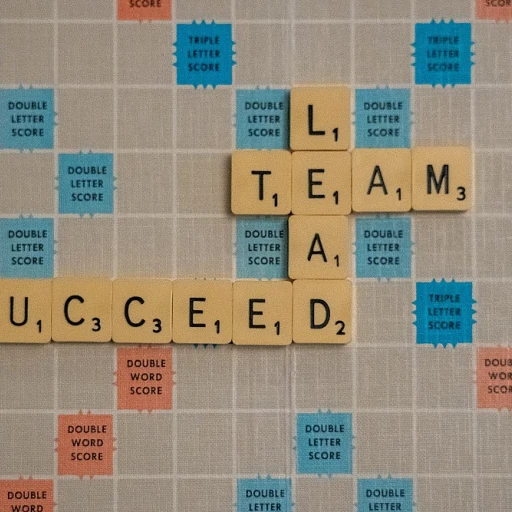Defining Competency Empowerment
Exploring the Core of Competency Empowerment
Competency empowerment is a fundamental concept in modern workplaces, aiming to enhance the skills and abilities of team members through targeted development strategies. It involves assessing the competencies of candidates and current employees to ensure they align with organizational goals. This approach not only focuses on individual growth but also on fostering a collaborative environment where diverse perspectives are valued.
At its core, competency empowerment is about recognizing and nurturing the potential within each team member. This involves understanding the unique skills and abilities that each individual brings to the table, and leveraging these for the collective success of the team. For instance, a candidate's ability to lead a team effectively can be assessed through competency-based interview questions that describe time management and decision-making skills.
In the context of employee feedback, competency empowerment plays a crucial role. By providing structured feedback, managers can guide employees in honing their skills and improving their performance. This process often includes situational questions that assess a candidate's ability to navigate complex situations and make informed decisions. For more insights on how managers can benefit from employee feedback, you can explore this resource.
As organizations strive for long-term success, embedding competency empowerment into their culture becomes essential. It not only aids in the personal development of employees but also strengthens the overall decision-making process within teams. By focusing on competencies, companies can ensure that their workforce is well-equipped to tackle challenges and drive projects forward.
The Role of Situational Questions
Understanding the Power of Context
In the realm of competency empowerment, situational questions are essential tools used to gauge the abilities and skills of candidates in various contexts. These questions require candidates to describe a time when they have dealt with specific situations, allowing interviewers to assess candidate ability to apply their competencies in real-world scenarios. When used effectively, these queries provide insights into a candidate's potential to integrate diverse perspectives, demonstrate problem-solving capabilities, and lead a team under different situations. They go beyond theoretical knowledge, focusing on practical application and experiential learning. Here's why situational questions are indispensable in the competency-based interview process:- Assessing Flexibility and Adaptability: Situational questions are designed to evaluate a candidate's flexibility; understanding how they adapt to challenges showcases their long-term potential within a team project. An ideal answer illustrates creative problem-solving and decision-making processes in action.
- Uncovering Leadership Qualities: When candidates share examples of past leadership experiences, interviewers can better understand their leadership style and ability to guide team members. This is especially crucial in determining how a candidate may lead a team and contribute to overall team dynamics.
- Evaluating Decision Making Skills: Candidates describing their decision-making process in a stressful situation reveals their approach to tackling issues. An effective sample answer might highlight their competencies in thoroughly analyzing situations before making crucial decisions.
- Understanding Interpersonal Skills: How candidates work with others is amplified in situational questions. By describing instances where they have had to collaborate or address conflicts, employers can gauge their ability to maintain strong relationships with team members.
Crafting Effective Situational Questions
Creating Situational Questions for Maximum Impact
Crafting effective situational questions is an art that requires understanding both the competencies you want to assess and the context in which they will be applied. These questions are essential in evaluating a candidate's ability to handle real-world scenarios, thus providing insights into their problem-solving skills, leadership, and decision-making processes.
When developing situational questions, consider the following strategies:
- Identify Key Competencies: Start by pinpointing the specific competencies you want to evaluate. Whether it’s leadership, teamwork, or problem-solving, ensure your questions align with these competencies.
- Use the STAR Method: Encourage candidates to answer using the STAR method (Situation, Task, Action, Result). This approach helps them describe a time when they faced a particular situation, the task they needed to accomplish, the actions they took, and the results of their efforts.
- Relate to Real-World Scenarios: Frame questions that mimic actual challenges candidates might face in the role. This not only assesses their skills but also gives them a glimpse into the job’s realities.
- Incorporate Diverse Perspectives: Design questions that require candidates to consider different viewpoints, promoting a comprehensive understanding of their decision-making abilities.
For example, a question could be: "Describe a time when you had to lead a team through a challenging project. What was your approach, and what was the outcome?" This question assesses leadership and problem-solving while encouraging candidates to share an example of their past experiences.
Incorporating these strategies into your interview questions can significantly enhance your ability to assess candidate competencies effectively. For more on how humor can play a role in workplace recognition, you might find this resource on workplace recognition insightful.
Challenges in Implementing Situational Questions
Overcoming Hurdles in Utilizing Situational Questions
Incorporating situational questions into competency empowerment can be a game-changer for assessing candidate ability. However, the process is not without its challenges. Understanding these hurdles can enhance the effectiveness of your interview questions and improve the decision-making process.
One of the primary challenges is crafting questions that accurately assess the diverse perspectives and skills of candidates. It's crucial to ensure that the questions are not only relevant to the competencies required but also tailored to the specific role. This requires a deep understanding of the job description and the competencies it demands.
Another challenge lies in evaluating the responses. Candidates might describe a time when they led a team or made a crucial decision, but the real test is in assessing the depth of their problem-solving skills and leadership ability. This is where the STAR method—Situation, Task, Action, Result—can be invaluable. It helps interviewers focus on the specific actions taken by the candidate and the outcomes achieved.
Time constraints during interviews can also pose a significant challenge. Interviewers need to balance the time spent on situational questions with other aspects of the interview. This requires careful planning and prioritization to ensure that all key competencies are assessed without making the process overly lengthy.
Finally, there is the challenge of consistency. To ensure fair assessment, it’s essential that all candidates are asked similar situational questions. This consistency helps in comparing candidate responses more effectively and making informed decisions.
Despite these challenges, with careful planning and a structured approach, situational questions can be a powerful tool in competency-based interviews. They provide insights not just into a candidate's past actions but also their potential to contribute to the team and the organization in the long term.
Best Practices for Feedback Sessions
Maximizing the Impact of Feedback Sessions
To truly harness the power of situational questions in a competency empowerment framework, feedback sessions must be approached with intention and care. Effective feedback sessions enhance the candidate's ability to demonstrate their competencies, such as leadership, communication, and problem-solving, within the context of situational questions. Here are some best practices to consider:- Foster Open Dialogue: Encourage team members to share examples of previous experiences, fostering an environment where diverse perspectives can flourish. This can help assess a candidate's decision-making process and their ability to describe how they led a team or project.
- Utilize the STAR Method: Integrating the Situation, Task, Action, Result (STAR) method into feedback discussions helps candidates provide structured and illustrative responses. This approach can effectively reveal a candidate's competencies by having them describe a time they tackled specific challenges.
- Focus on Long-Term Development: Feedback should not only focus on immediate performance but also on the candidate's long-term growth and ability to work well within the team. This holistic approach allows team members to contribute to an enduring culture of continuous improvement.
- Clarity and Specificity: Pose situational questions that clearly align with the competencies you seek to evaluate. This will provide an unambiguous basis for assessing the candidate's skills and decision-making abilities. Sample answers and specific scenarios can further guide the evaluation process.
- Timely Feedback: Ensure feedback is delivered in a timely manner, maintaining relevance to the interview process or ongoing team assessments. Allowing candidates to act on feedback promptly maximizes growth and adaptation.











